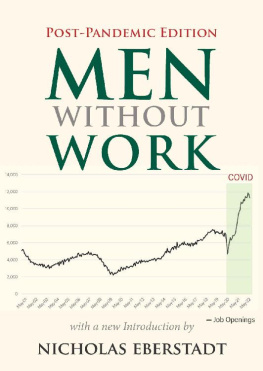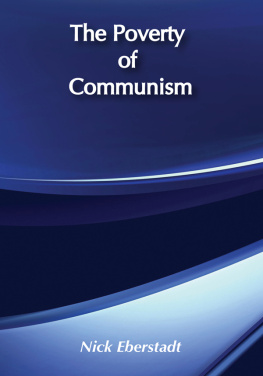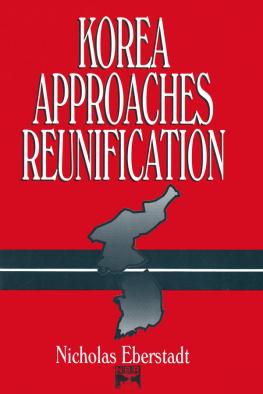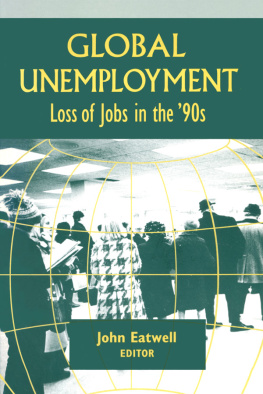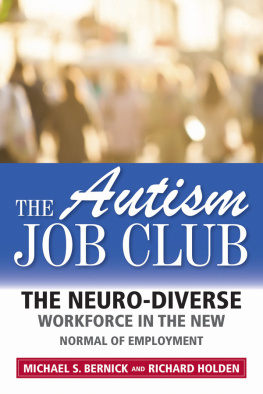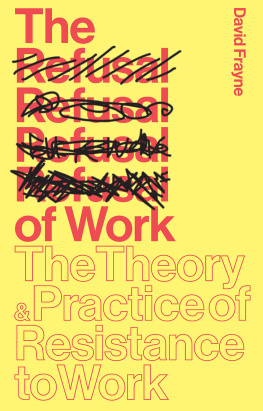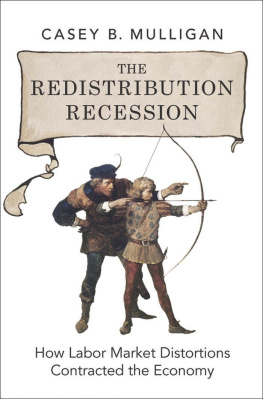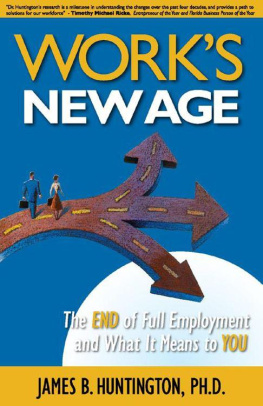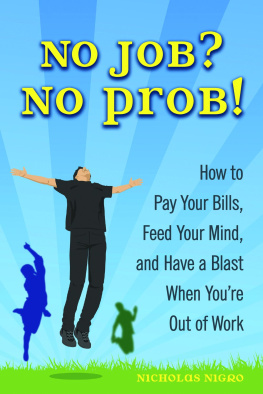
Templeton Press
300 Conshohocken State Road, Suite 500
West Conshohocken, PA 19428
www.templetonpress.org
2016, 2022 by Nicholas Eberstadt
All rights reserved. This book may not be reproduced, in whole or in part, including illustrations, in any form (beyond that copying permitted by Sections 107 and 108 of the U.S. Copyright Law and except by reviewers for the public press), without written permission from the publishers.
First edition, 2016. Second edition, 2022.
Designed and typeset by Gopa and Ted2 Inc.
ISBN: 978-1-59947-597-4 (paperback)
ISBN: 978-1-59947-598-1 (ebook)
Library of Congress Control Number: 2022942910
A catalogue record for this book is available from the Library of Congress.
This paper meets the requirements of ANSI/NISO Z39.48-1992
(Permanence of Paper).
Printed in the United States of America.
22 23 24 25 26 10 9 8 7 6 5 4 3 2 1
For Christopher C. Demuth Sr.
Mentor, Colleague, Friend

Contents

Acknowledgments

T HIS BOOK, LIKE A Nation of Takers before it, was the idea of Susan Arellano, publisher of Templeton Press. Brilliant editor that she is, she somehow persuaded me that this effort too was actually my own idea. Susan is an utter delight as an intellectual compatriot. She is demanding in the best senseencouraging her colleagues in the world of ideas to do their very best work, and even to try to exceed their own highest standards. Those on her Templeton Press team are professionals who epitomize grace under pressure. Their hard work is noted with truest authorial gratitude. Special thanks to Dave Reinhard for his deft and seamless reduction of my too-lengthy manuscript to a more reader-friendly length.
Although this is a slim volume, it required a considerable amount of data collection and quantitative analysis, including work with a variety of unpublished statistical files from the U.S. government and from nongovernment sources as well. I could never have produced this study without the splendid research assistance I enjoyed during this project. Primus inter pares was Alexander Coblin, the extraordinarily talented scholar who was the main research assistant for this study. Alexs insights have enriched every chapter in this book. Alex also helped select an all-star team of interns whose work contributed significantly: Pat Hunley, Katherine Cole, Claire Chang Liu, and Gabe Anderson (whose above-and-beyond contributions during the completion of this study deserve a special salute). At a critical juncture in the study I was also aided in microdata analysis by Professor Joseph Price of Brigham Young University and an impressive squad of graduate students that he assembled for the task: Michael Gmeiner, Adam Shumway, Tanner Eastmond, and Jon McEwan. I owe a debt of gratitude to all these men and women. And it should go without saying that any errors in the following pages are mine alone.
My most important reader was my wife, Mary Eberstadt. This book, like the rest of my life, is the better for her insights.
Finally, the American Enterprise Institute (AEI) has been my professional home and intellectual haven for over thirty years. I owe the institution, and my friends and colleagues within it, more than can be expressed in any literary thumbnail. For reasons of space I thank here just two of many AEI friends and colleagues to whom I owe thanks: Arthur Brooks, AEIs current president; and Christopher DeMuth, his predecessor, AEIs president from 1986 through 2008.
On his tour of duty, Chris saved AEI and rededicated it. This book is dedicated to him.
Men Without Work

Introduction
Post-Pandemic Edition (2022)

T HIS BOOK, WHICH first appeared in 2016, is about the collapse of work for men in modern America: a continuing calamity that began in the 1960s. Today, in 2022, American men suffer Depression-era employment rateseven though they inhabit the wealthiest and most productive society ever known.
Millions of men in the prime of life languish in a state of economic inactivity and financial dependence, neither working nor looking for work. Their improbably demeaned straits are a main feature of a broader landscape of pathologies elsewhere termed the New Misery. These pathologies have intensified during the era of Covid.
Covid-19 struck like a meteorite and disrupted the world we knew in cataclysmic fashion. Now, as a largely vaccinated America contemplates life after the crisis, a dumbfounding spectacle confronts us: a nationwide peacetime labor shortage. Businesses everywhere are begging for help while vast numbers of working-age men (and women) sit on the sidelines, checked out of the workforce (see ).
It seems that in just six years, America has gone from men without work to work without men (and now, work without women as well). As of this writing, more than 11 million job openings are unfilled.

Americans have been renowned for their work ethic, but the future of that work ethic should not be taken for granted. New trends indicate that the men without work affliction may be spreading to groups previously resistant to it. This introduction examines some of these perverse new trends as well as features of the crisis that have maintained dogged continuity since this book first appeared.
II
At the national level, our country is unimaginably wealthy. Between 2000 and the end of 2021, nominal net worth for U.S. households soared by $100 trillionand $30 trillion of that surge took place after the beginning of the global pandemic.
Divided evenly, year-end 2021s bounty would mean $1.7million for a notional family of four.
By this indicator, the economy looks like its remarkable old postwar self. Unfortunately, Americas real economythe one producing the goods and services for the national populationhas not been faring nearly as well.
The new normal for twenty-first century growth1 percent per capita per annumis less than half the earlier postwar tempo. Despite its rapid snapback from the brief pandemic plunge, gross domestic product (GDP) in early 2022 was almost $6 trillion smaller than if America had kept on its 1950-2000 growth path. Thats a gap of almost 25 percent, which works out to a shortfall of $14,000 for every American man, woman, and child. At its anemic new twenty-first century pace, doubling Americas per capita GDP would take almost 70 years.
If our GDP performance is disappointing, the employment record is dismal. Between January 2000 and April 2022, work rates for Americans twenty and older ratcheted lower with each new recession.
The dysfunctions of our national economy are the backdrop to the ongoing deterioration in employment profiles of working prime-age men. There were 63 million of these men at latest count. For all the postwar changes in Americas manpower pool, prime-age men still constitute the backbone of the U.S. labor force. Whats more, it is during these same prime working ages that men typically form their families and raise their childrennoneconomic functions without which no society can persist.
Next page
